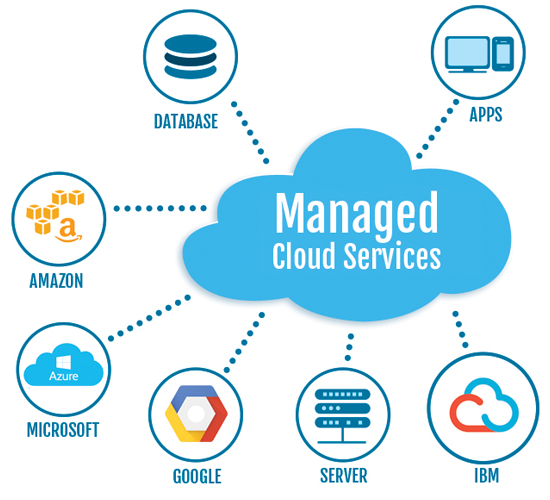Universal Cloud Service: Trustworthy and Effective Solutions for Your Business
Universal Cloud Service: Trustworthy and Effective Solutions for Your Business
Blog Article
Achieve Seamless Scalability With Cloud Provider
In the ever-evolving landscape of cloud services, accomplishing smooth scalability stands as a foundation for contemporary companies seeking to stay adaptable and affordable. The ability to easily increase or acquire sources in feedback to changing demands is a crucial benefit in today's fast-paced electronic setting. By understanding the art of scalable cloud solutions, organizations can not only enhance performance and enhance procedures yet also pave the means for future growth and development. The pursuit for smooth scalability with cloud services unveils a globe of possibilities for those happy to accept the transformative power of vibrant resource monitoring.
Advantages of Cloud Scalability
Cloud scalability uses organizations the adaptability to dynamically readjust resources based on need, ensuring optimal efficiency and expense performance. One key advantage is the capacity to scale resources up or down rapidly in response to rising and fall work. This dexterity allows businesses to fulfill altering consumer requirements without over-provisioning sources, inevitably causing set you back savings. Scalability also improves efficiency by making sure that systems can manage boosted web traffic or workload without experiencing downtime or downturns. By successfully alloting sources, organizations can preserve high degrees of efficiency throughout peak times without unnecessary costs throughout quieter periods. Furthermore, cloud scalability advertises advancement and experimentation by permitting businesses to quickly check originalities and range them as required. This versatility encourages a culture of continuous renovation and adjustment, making it possible for companies to stay competitive in a quickly advancing market landscape. Eventually, the benefits of cloud scalability expand beyond price financial savings to incorporate enhanced performance, agility, and advancement.
Key Functions for Scaling
Effective scaling in cloud solutions relies upon key attributes that enable companies to adjust sources dynamically based upon demand. One essential feature for scaling is flexibility, permitting resources to scale up or down in response to fluctuating work. This ensures that organizations can fulfill efficiency demands without over-provisioning resources. An additional essential function is scalability, enabling systems to deal with boosted workload by adding sources seamlessly. This feature is important for accommodating growth without compromising efficiency. Additionally, automation plays an important role in scaling by automating the provisioning and de-provisioning of resources based upon predefined plans. Automation lowers human intervention, improves effectiveness, and ensures rapid reaction to transforming needs. Monitoring and analytics tools are additionally important for scaling, offering understandings into resource utilization, efficiency metrics, and potential bottlenecks. These devices allow organizations to maximize and make informed decisions resource allowance for reliable scaling. Generally, these key features jointly empower organizations to attain seamless scalability in cloud solutions.
Executing Auto-Scaling Methods
To successfully enhance source appropriation and adjust to differing work, organizations should purposefully carry out auto-scaling techniques in their cloud solutions infrastructure. Auto-scaling allows systems to instantly readjust the variety of compute sources based upon real-time need. There are numerous auto-scaling approaches that companies can utilize, such as predictive scaling, which utilizes historic data to anticipate future resource requirements, and responsive scaling, which replies to existing work adjustments.

Ideal Practices for Scalability
For companies aiming to boost their scalability in cloud solutions, carrying out best techniques is essential for optimum performance and source management. One trick best technique is making applications with a microservices style. This method breaks down applications into smaller, independent services that can be deployed, upgraded, and scaled individually, permitting for better versatility and scalability.
One more important practice is using containerization innovation, such as Docker or Kubernetes. Containers allow the product packaging of applications and their reliances right into separated devices, making it easier to scale parts individually and deploy them continually throughout various environments.
In addition, executing automated deployment and framework as code (IaC) can streamline scalability initiatives (linkdaddy cloud services). Automation tools like Terraform or Ansible aid in provisioning and handling resources efficiently, decreasing hand-operated mistakes and allowing fast scalability
Moreover, keeping track of performance metrics, establishing up informs, and conducting normal ability planning are necessary methods to make certain positive scalability monitoring. By adhering to these best methods, companies can achieve smooth scalability in their cloud solutions while enhancing efficiency and source usage.
Tracking Efficiency Metrics
When assessing the effectiveness of cloud solutions scalability, closely checking efficiency metrics is necessary for investigate this site making sure ideal functionality and source allotment. By constantly tracking key efficiency indicators (KPIs) such as action times, throughput, resource, and latency application, organizations can acquire valuable insights right into the health and efficiency of their cloud facilities. Checking efficiency metrics permits the early discovery of possible traffic jams or issues that could influence scalability, enabling positive procedures to be taken to resolve them before they intensify.

Verdict
To conclude, attaining smooth scalability with weblink cloud solutions is vital for companies to enhance efficiency, improve innovation, and keep high performance levels during peak times. By leveraging the advantages of cloud scalability, executing auto-scaling methods, making use of crucial features such as elasticity and automation, and adhering to finest techniques like application design and performance surveillance, businesses can successfully scale their systems while optimizing resource usage and efficiency.
The pursuit for seamless scalability with cloud solutions reveals a world of possibilities for those willing to embrace the transformative power of dynamic resource monitoring.
Cloud scalability uses organizations the adaptability to dynamically change sources based on demand, making certain optimal efficiency and price effectiveness. One more key feature is scalability, making it possible for systems to handle increased workload by adding sources perfectly.For organizations intending to boost their scalability in cloud services, executing finest methods is critical for optimal performance and resource monitoring.When assessing the effectiveness of cloud solutions scalability, carefully monitoring efficiency metrics is important for ensuring optimum functionality and resource appropriation.
Report this page